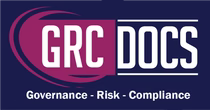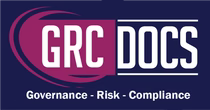SOC2 Human Resource Security Policy Template Download
Introduction
The Human Resource Security Policy is a foundational document that ensures employees and contractors understand their responsibilities for protecting company information, complying with regulations, and maintaining a secure work environment. It is more than just a compliance requirement it is a framework for safeguarding sensitive data, enhancing organizational trust, and reducing risks associated with human errors or malicious actions. Implementing this policy step-by-step helps organizations align with legal standards, industry best practices, and internal governance processes, ensuring that the human factor in security is proactively managed.

Step-By-Step Guide To Using The Human Resource Security Policy
Step 1: Understand the Scope of the Policy
-
What to do: Review the Scope section to determine who the policy applies to—typically, all employees, contractors, management, and any third parties handling organizational data.
-
Why it matters: This ensures no one is excluded from compliance obligations, reducing the chance of policy gaps.
-
Tip: Make a clear list of all categories of personnel the policy covers and ensure they are aware of it.
Step 2: Assign Clear Roles and Responsibilities
-
What to do: Identify who in the organization is responsible for implementing, monitoring, and enforcing the policy.
-
Who’s involved:
-
Management – Oversees the policy, allocates resources, ensures compliance.
-
IT Department – Maintains security systems and provides training.
-
Employees – Follow the policy, protect information, report incidents.
-
-
Why it matters: Clear accountability prevents misunderstandings and ensures quick response to incidents.
-
Tip: Create a contact list of responsible individuals for each aspect of the policy.
Step 3: Implement Human Resources Security Measures
-
What to do: Follow the key security areas outlined in the policy:
-
Headcount tracking – Maintain updated employee records.
-
Screening – Verify qualifications and conduct background checks.
-
Data protection – Ensure compliance with privacy laws.
-
Training & awareness – Educate staff on security responsibilities.
-
Remote work security – Secure data transmission for remote staff.
-
-
Why it matters: These controls form the foundation for protecting sensitive organizational and client data.
Step 4: Conduct Employee Screening Before Onboarding
-
What to do: Perform thorough background checks on all prospective hires, contractors, and third-party personnel.
-
Checks can include:
-
Criminal history (as permitted by law)
-
Employment verification
-
Education validation
-
Professional references
-
-
Why it matters: This reduces risks from negligent hiring and prevents individuals with risky backgrounds from accessing sensitive information.
Step 5: Follow the Employee Onboarding Process
-
What to do: Develop an onboarding checklist that includes:
-
Explaining security policies
-
Providing relevant documents for review and signature
-
Granting access only to necessary systems
-
-
Why it matters: Early awareness ensures new employees understand their security responsibilities from day one.
-
Tip: Incorporate a “security induction session” within the first week of employment.
Step 6: Set Clear Terms and Conditions of Employment
-
What to do: Ensure that every employment contract includes:
-
Legal rights and obligations
-
Non-Disclosure Agreements (NDAs)
-
Non-Competition Agreements (NCAs) if applicable
-
Information security responsibilities
-
-
Why it matters: Written agreements protect the organization legally and ethically if disputes arise.

Step 7: Enforce the Code of Conduct
-
What to do: Provide a documented Code of Conduct that outlines acceptable and unacceptable behavior.
-
Actions:
-
Require acknowledgment from all employees
-
Include guidance for reporting violations
-
-
Why it matters: It builds a culture of integrity and accountability, making violations easier to address.
Step 8: Deliver Information Security Training & Awareness
-
What to do:
-
Run annual security awareness programs
-
Provide regular refresher sessions
-
Distribute awareness materials (emails, posters, handbooks)
-
-
Why it matters: Ongoing training helps prevent mistakes that lead to breaches.
-
Tip: Make training interactive through quizzes, simulations, or gamification.
Step 9: Establish a Disciplinary Procedure
-
What to do: Document a clear, fair, and legally compliant disciplinary process for policy violations.
-
Key features:
-
Gradual escalation (verbal warning → written warning → termination)
-
Consistent application across all employees
-
-
Why it matters: Having a set process ensures fairness and legal defensibility.
Step 10: Manage Termination or Role Changes Carefully
-
What to do:
-
Revoke access rights immediately upon termination or role change
-
Retrieve company property (laptops, ID cards, documents)
-
Conduct an exit interview to reinforce confidentiality obligations
-
-
Why it matters: Many breaches occur after employment ends if access is not promptly removed.
Step 11: Conduct Regular Risk Assessments
-
What to do: Perform HR-related security risk assessments at least twice a year.
-
Why it matters: This helps identify vulnerabilities and keeps controls updated against new threats.
-
Tip: Document all findings and corrective actions for audit purposes.
Step 12: Apply Security Measures Consistently
-
What to do: Implement both cybersecurity and physical security measures, such as:
-
Firewalls & intrusion detection systems
-
Physical access controls for secure areas
-
-
Why it matters: Security must be layered to be effective.
Step 13: Control Access to Information
-
What to do:
-
Grant system access based on the “least privilege” principle
-
Monitor and log all access to sensitive data
-
-
Why it matters: This prevents unauthorized or accidental access to critical resources.
Step 14: Ensure Compliance with Laws and Regulations
-
What to do: Stay updated on data protection laws and industry-specific regulations in your region (e.g., Australia’s Privacy Act, NZ Privacy Act, Telecommunications Acts).
-
Why it matters: Non-compliance can result in heavy penalties and reputational damage.
Step 15: Maintain Continuous Training & Awareness
-
What to do: Keep security at the forefront by:
-
Issuing periodic reminders
-
Running simulated phishing exercises
-
-
Why it matters: Awareness fades over time without reinforcement.
Step 16: Review and Update the Policy Regularly
-
What to do:
-
Review annually or after significant changes in laws, technology, or organizational structure
-
Incorporate audit feedback
-
-
Why it matters: Policies can quickly become outdated; reviews keep them effective.
Step 17: Document Exceptions
-
What to do: Record any deviations from the policy, get senior management approval, and define temporary measures.
-
Why it matters: This ensures accountability even when exceptions are made.
Step 18: Enforce Approval and Acknowledgment
-
What to do:
-
Obtain formal approval from top management
-
Have all employees sign acknowledgment forms
-
-
Why it matters: Acknowledgment demonstrates awareness and consent, which is vital for enforcement.
Conclusion
The Human Resource Security Policy is only effective when it is actively applied, monitored, and enforced. By following these step-by-step actions—from understanding the scope to ensuring ongoing compliance—organizations can reduce risks, protect sensitive data, and foster a security-conscious culture. When properly implemented, this policy becomes a living part of the organization’s operations, not just a document on a shelf. The result is a workforce that is aware, accountable, and aligned with the organization’s security objectives, ensuring resilience in the face of both internal and external threats.





